Boston Red Sox: Biggest free agent busts in franchise history

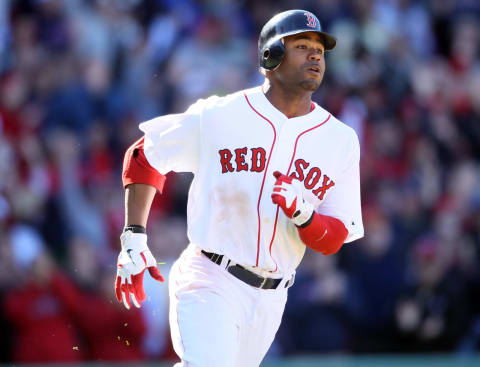
The Red Sox have never been shy about spending money on free agents to bolster the team, but for all the ones they’ve hit on they’ve spent unwisely on just as many. Here’s a list of the worst free agents they’ve ever signed.
As one of the richest teams in one of the biggest baseball markets in the country, the Red Sox have never been shy about spending money. One of the reasons they’ve been perennial contenders over the last two decades has been the willingness of owner John Henry to open up his deep pockets and spend on talent to augment the team.
However, just because the Red Sox have the money to spend doesn’t mean they’ve always spent it wisely. Oftentimes in an effort to keep up with the Yankees and stay competitive year in and year out, the Red Sox have spent foolishly on free agents.
Sometimes these signings ended up not working out due to unforeseen circumstances like injuries while other times the player in question couldn’t handle the pressure of playing in Boston. In many cases, these signings simply underperformed and weren’t worth the money the Red Sox invested in them.
The following is a list of the worst free-agent signings the Red Sox have made since free agency began in Major League Baseball in 1976. A couple of these players were simply forgotten once their time in Boston was up while others became the object of fan resentment. None have really been missed by Red Sox fans.
In no particular order, let’s begin!
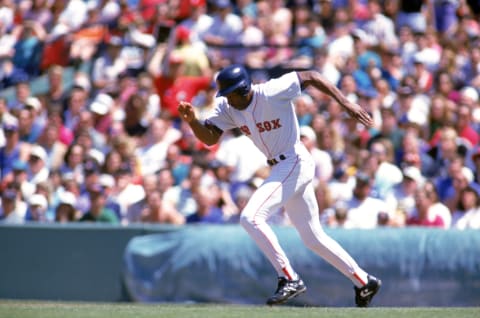
Andre Dawson
When I was growing up in the 1980s and 1990s, my dad and I were massive Boston Celtics fans (we still are). One thing he used to always say was that the Celtics had a history of getting other teams’ superstars when they were way past their prime. In the case of Andre Dawson, the Red Sox seemed to be taking a page out of the Celtics’ book.
Dawson was already a veteran of seventeen seasons, eleven in Montreal followed by six in Chicago with the Cubs, when the Red Sox signed him as a free agent in the winter of 1992. I remember being really excited while my dad was telling me how old and rundown he was.
Dawson had been a star in his younger days, winning NL Rookie of the Year in 1977 and the NL MVP in 1987. By the time he got to Boston, though, his best days were well behind him. Suffering from chronic knee problems, Dawson had been moved from center field to right field during his Cubs days and that’s where the Red Sox initially put him.
However, right field at Fenway Park is cavernous and I remember how much of a sad sight it was to see Dawson hobbling around out there running after balls. While he did hit his 400th career home run early in the 1993 season, Dawson ended up re-injuring one of his knees and spent most of the remainder of the season as a DH.
He played in 121 games in 1993, hitting .273 with 13 HR and 67 RBI. He ended having surgery on his knee at the end of the season and missed most of 1994, only playing in 75 games for the Red Sox and hitting .240 with 16 home runs and 48 RBI. After the season, he left for the Marlins and the final two forgettable seasons of his Hall of Fame career.
In Dawson’s case, he was well past his prime physically when the Red Sox signed him and he just didn’t have much left in the tank. While it ended up not being a great signing, there were no hard feelings and you’d be hard-pressed to find any fans who disliked Dawson during his time in Boston. He was simply old and broken down by the time he put a Red Sox uniform on.
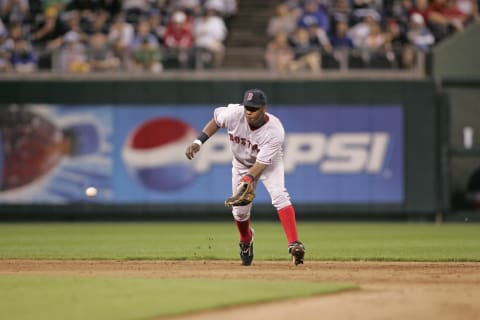
Edgar Renteria
The Red Sox signing Edgar Renteria was a classic case of bringing someone to the team who simply didn’t have the mental makeup to survive playing in Boston. Hot on the heels of their historic win in the 2004 World Series, the Red Sox were in desperate need of a shortstop.
Having traded Nomar Garciaparra at the trade deadline in July and not re-signing Orlando Cabrera, they had a vacancy at what is arguably the most important defensive position in the infield. For whatever reason, the Red Sox decided to sign the free-agent shortstop who had hit into the final out of the World Series against them months before.
Edgar Renteria had been a very good shortstop for the Florida (now Miami) Marlins and won a World Series with them in 1997 in his second season. After one more year in Florida, he spent six seasons as the St. Louis Cardinals’ shortstop before Boston signed him to a four-year, $40 million contract (with an option for a fifth year).
From the very beginning, it was a disaster. Renteria only batted .228 in April to start the season and was booed by Red Sox fans at Fenway Park which visibly shook him. He led the major leagues with 30 errors in the field and only hit .276 with 8 home runs and 70 RBI for the season. In the 2005 ALDS, he hit .231 with no homers or RBI.
It was clear partway through the season to Red Sox fans, the media, and the Red Sox themselves that Renteria was a terrible fit for Boston and was a total bust. The team cut their losses by trading him after the season to the Atlanta Braves for a prospect.
Edgar Renteria’s performance on the field was massively disappointing but worse than that he just didn’t have the mental fortitude to handle playing in Boston. It also wouldn’t be the first time the Red Sox whiffed on a free agent and kept paying him to play elsewhere.
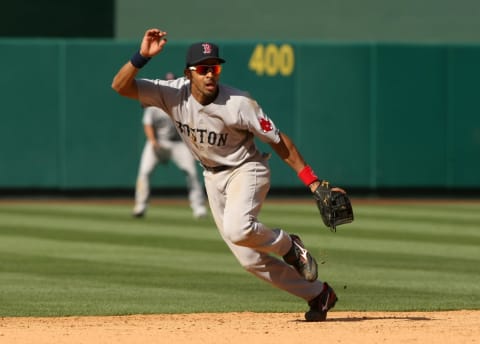
Julio Lugo
After they traded Nomar Garciaparra in 2004 and before the arrival of Xander Bogaerts in 2013, being the shortstop of the Red Sox was like being the drummer in Spinal Tap. Among those who manned the revolving door on the left side of the infield was one of the worst free agents the Red Sox ever signed, Julio Lugo.
To this day I don’t understand then-GM Theo Epstein’s love affair with Lugo, but Theo basically bid against himself to sign Lugo to a four-year, $36 million contract in the winter of 2006. The plan was for Lugo to be the Red Sox leadoff hitter, but he was so bad at getting on base that then-manager Terry Francona dropped him to the bottom of the order.
Lugo struggled so much at the plate that at one point he went 0-31 from mid-June to early July although he did improve toward the end of the season. For the year he hit .237 with 8 home runs and 73 RBI to go along with a dismal .294 OBP. On the bright side, he stole 33 bases including 20 in a row successfully.
He hit much better in the 2007 postseason, hitting .300 in the ALDS, .200 in the ALCS, and .385 in the World Series. Things didn’t improve in 2008 and he was hitting .268 with one home run and 22 RBI when he went down with a knee injury halfway through the season (82 games). After surgery, he came back in 2009 but again played poorly.
In 32 games in 2009, Lugo hit .284 with one home run and 8 RBI. Not only was he a disaster at the plate, but he was also a disaster in the field, committing 19 errors in 2007, 16 in 2008, and 7 in 2009. Mercifully, he was traded to the St. Louis Cardinals in July, ending his Red Sox career.
While Lugo had a few big hits in the 2007 postseason run, I don’t think there’s a single Red Sox fan who misses him or looks back upon his time in Boston with any particular fondness.
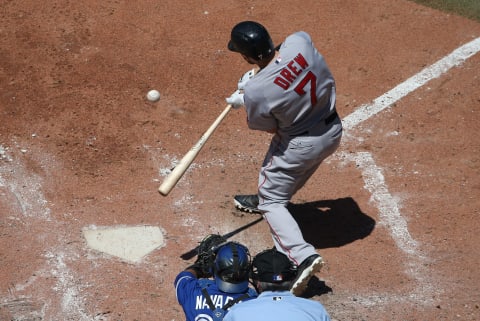
Stephen Drew
Stephen Drew is yet another Red Sox free-agent signing who played shortstop and like Lugo, his time in Boston was underwhelming even though they won a World Series during his brief time here.
Just barely a year after his older brother JD Drew retired after spending the final five seasons of his career with the Red Sox, the team signed Stephen to a one year, $9.5 million contract. His year in Boston was decent but underwhelming, with a .253 average to go along with 13 home runs and 67 RBI. He was awful in the postseason, hitting .133 in the ALDS, .050 in the ALCS, and .158 in the World Series.
He did have a crucial home run in the clinching game of the World Series but otherwise had a forgettable October. Still, the Red Sox tried to bring him back by offering him another one year contract, this one for $14.1 million. Shockingly, Drew turned it down and went into free agency. However, nobody was interested and when the 2014 season started he was unsigned.
In a panic move after rookie Xander Bogaerts struggled to start the season, the Red Sox brought Drew back in May of 2014 for $10 million (the prorated amount of the $14.1 million they’d offered him). He was abysmal, hitting .176 with 4 home runs and 11 RBI in 39 games before being traded to the Yankees at the deadline.
Apart from his home run in game six of the 2013 World Series, Stephen Drew ended up being a colossal waste of $19.5 million for the Red Sox. Turns out his brother was a much better free agent signing (which will be discussed in an upcoming article).
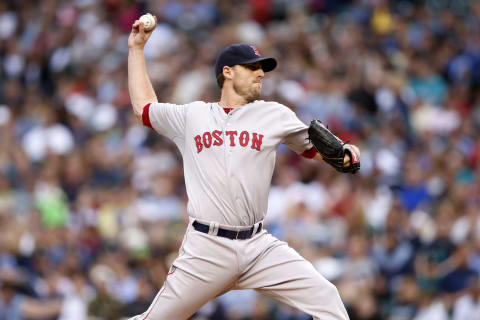
John Lackey
John Lackey is one of two Red Sox free agents on this list who were essential to the team winning a World Series and yet still remained disliked by most of the team’s fans. He spent the first eight seasons of his career with the Los Angeles Angels, gaining prominence as a rookie in 2002 when he won the clinching game seven of the World Series.
The Red Sox signed Lackey in the winter of 2009 to a five-year, $82.5 million contract. Language in the contract stipulated that if he missed a season due to injury, the final year of the deal would be at the league minimum. He pitched decently in his first season with the Sox, going 14-11 in 2010 before he had the worst season of his career in 2011 going 12-12.
Things quickly went from bad to worse as Lackey rapidly became unlikable to Red Sox fans and the Boston media. He had many testy exchanges with the Boston sports press from the beginning and things only went downhill. During the 2011 season, it was revealed that Lackey was divorcing his wife in the midst of her cancer treatments.
Regardless of the private details behind the story, it wasn’t a good look for him and it was only made worse by his comments in the press. After the season it was revealed that he was part of the now-infamous “fried chicken and beer” gang which also included Josh Beckett and Jon Lester. During the offseason fallout, Lackey had Tommy John surgery and missed all of the 2012 season.
However, he was seen by many drinking beers in the clubhouse during his rehab which only inflamed fan opinion against him. He was able to redeem himself in 2013; even though he was a pedestrian 10-13 with a 3.52 ERA in the regular season, he was excellent in the postseason, going 3-0 and winning the deciding game of the World Series.
Lackey came into the final year of his contract in 2014 making the league minimum and it was obvious he was unhappy about it. Still, he bounced back in a big way and was 11-7 in 22 starts for the Red Sox before he was traded to the Cardinals at the deadline for another pitcher who would end up helping the Red Sox win a World Series, Joe Kelly.
While John Lackey was a big reason why the team won the 2013 World Series, overall his time in Boston presaged the other free agent mentioned above who helped the team win but was never really embraced or liked by fans and the media.
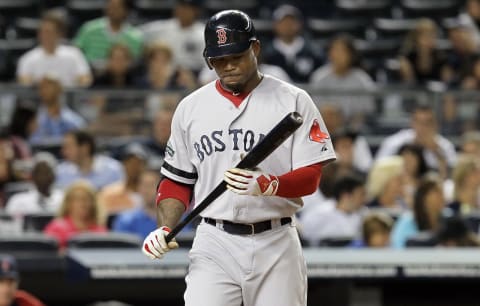
Carl Crawford
I’ve never understood the logic that because a player always performs great when you play against him, you should sign him, but that’s exactly the thought process the Red Sox had when they signed Carl Crawford. He’d been a thorn in their side for years as a member of the Tampa Bay Rays and they just had to have him.
There’s been a lot of controversy in the years during and since Crawford’s short time in Boston, most of it stemming from the fact that in no way did the Red Sox really need him. Faced with declining television ratings after the 2010 season, Red Sox chairman Tom Werner, a TV guy who oversaw the team’s NESN network, urged Theo Epstein to sign Crawford.
Believing the team needed to “make a splash” to reignite fan interest, Red Sox ownership overrode Epstein’s objections and pushed for the signing of Crawford. Even though the Red Sox already had a speedy outfielder who hit leadoff (Jacoby Ellsbury), the owners wanted Crawford and they got him.
Signing him for seven years and $142 million, the contract was a disaster from the start. Crawford only hit .137 in the first two weeks of the season and for the year finished with a .255 average,11 home runs, 56 RBI, and a dismal .289 OBP.
His defense was bad in Boston, too, and few can forget the lasting image of him botching a line drive to left field in Baltimore on the final day of the season which allowed the winning run to score and completed the Red Sox historic September collapse. He spent most of 2012 injured and didn’t play his first game of the season until July.
He ended up being shut down August to undergo Tommy John surgery and in 31 games in 2012, Crawford hit .282 with 3 home runs, 19 RBI, and a .306 OBP. While recovering from the surgery, he was included in the huge salary dump when he was traded, alongside Josh Beckett and Adrian Gonzalez, to the Dodgers.
Once he left Boston, Crawford said that he was depressed during his time in Boston and that it was a “toxic” place to play. Whether or not that’s true, Crawford was, like Renteria, not mentally cut out to play in Boston for the Red Sox. This one might be the worst free-agent signing they’ve ever made if not for the following guy.
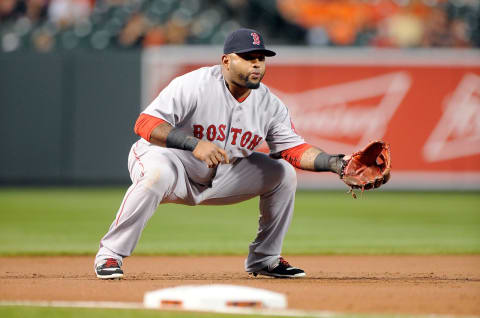
Pablo Sandoval
Debating whether the Carl Crawford signing or the Pablo Sandoval signing is the worst in Red Sox history is like debating whether it’s worse dying by gunshot or stabbing. Most Red Sox fans hated the Sandoval signing from the start and once again, it was a case of Red Sox ownership putting the marketing side of baseball over the actual play on the field.
Sandoval had become a cult hero in San Francisco during the first seven seasons of his career. He won three World Series with the Giants, and his rotund physique, big smile, and “Kung Fu Panda” nickname made him a fan favorite. He was a very good but not great regular season player who always seemed to elevate his play in the postseason.
With all of that being said, he wasn’t worth the five-year, $90 million deal the Red Sox gave him in the winter of 2014. Red Sox owners were surely seeing dollar signs from marketing Panda t-shirts and stuffed animals, but fans and the media had questions about Sandoval’s conditioning and regular-season numbers being worth the commitment.
It turns out the fans and media were right. Sandoval played in 125 games in 2015 and hit .245 with 10 home runs, 47 RBI, a .292 OBP, and a .658 OPS. It was the worst season of his career and included being suspended by the team after he was caught looking at photos of scantily clad women on Instagram during a game.
It turns out his 2016 would be even worse. The Red Sox front office and manager John Farrell spent the offseason raving about how Sandoval got into the best shape of his life in the offseason. However, when he showed up to spring training the visual evidence showed otherwise.
He was noticeably overweight, even more than before, and the team was roundly mocked for claiming that Sandoval had gotten down to “17% body fat” (one article at the time wondered if the Red Sox were dyslexic and really meant “71%”). He only played three games in 2016 before missing the rest of the season due to shoulder surgery.
Adding insult to injury, during one of the games he played in he took a massive swing, missed a pitch, and had his belt burst in what has become the defining moment of his Red Sox career. Coming back in spring training in 2017, he lost the starting third baseman job to rookie Travis Shaw and only appeared in 32 games (hitting .212 with 4 home runs and 12 RBI) before the Red Sox released him in July 2017.
Sandoval ended up going back to the Giants where he’s actually played fairly well. The Red Sox just finished paying his contract off despite the fact that he hasn’t played for them in almost three years. Not only was Pablo Sandoval not cut out for playing in Boston mentally, physically he was even worse. That alone might push this one ahead of the Crawford deal as the worst ever.

David Price
I’ll probably take a lot of grief for this one, but the Red Sox signing of David Price was one of their worst ever. Like Lackey, he ended up helping the team win a World Series, but it was never fun along the way and most fans and media members didn’t mourn the loss when he was traded to the Dodgers in February 2020.
Price was well-known to the Red Sox from spending the first six and a half seasons of his career in Tampa. He was a thorn in Boston’s side pitching for their division rival and he was arguably the reason the Red Sox didn’t return to the World Series in 2008, his pitching in game seven of the ALCS being an early career highlight.
By the time the Red Sox inked him to a seven-year, $217 million deal in the winter of 2015 (at the time the richest free-agent contract for a pitcher in history), Price was established as one of the top pitchers in the game, albeit one who couldn’t seem to get it done in the postseason.
It’s not that Price was bad in his four seasons in Boston, it’s just that he wasn’t great. The Red Sox seemed to go against their self-imposed edict of not paying for a pitcher’s decline years when they signed Price at the age of thirty. He started off his Red Sox tenure strong when he went 17-9 in 2016, but 2017 was not a good season for the team or Price.
He battled a wrist ailment in 2017 that seemed to be correlated to his excessive video game playing and he drew the ire of fans, former players, and the media for his very public and foolish feud with Dennis Eckersley (it was a one-sided feud at that since Eck refused to rise to the bait Price kept putting forth).
Price was awful in the 2016 and 2017 postseasons, continuing his terrible career track record in October by going 0-1 with a 6.75 ERA over the two years. He rebounded in 2018 by going 16-7 in the regular season and finally exorcising his postseason demons that October. After losing his start against the Yankees in the ALDS, Price caught fire.
He went 1-0 with a 3.38 ERA in his two starts against the Astros in the ALCS and then went 2-0 with a 1.98 ERA in his two World Series starts against the Dodgers including winning the deciding fifth game. Many fans (myself included) believed Price should have won the World Series MVP award over Steve Pearce.
More from Red Sox History
- Two notable Red Sox anniversaries highlight current organizational failures
- Contemporary Era Committee doesn’t elect any former Red Sox to Hall of Fame
- Johnny Damon calls Red Sox out, reveals hilarious way he skirted Yankees’ grooming policy
- Remembering the best Red Sox Thanksgiving ever
- Red Sox World Series legends headline 2023 Hall of Fame ballot
After the season Price announced he wasn’t going to opt-out and would remain in Boston. He was actually one of the Red Sox’s most consistent pitchers in an otherwise forgettable 2019 season, going 7-5 while struggling with a wrist issue before finally being shut down for the season in September.
In an effort to offload salary and reset the luxury tax penalties, the Red Sox included Price in the Mookie Betts deal and sent him to Los Angeles in February 2020. Even so, the Sox will have to eat half of his remaining salary ($48 million) over the next three years. When all is said and done, was Price really one of the worst Red Sox free-agent signings ever?
He belongs on the list because even though he was very good for two seasons, great in one postseason, and vital to their winning the 2018 World Series, on the whole, the Red Sox didn’t get their money’s worth. They got two very good seasons, two injury-shortened seasons, and a lot of headaches. While Price was well-liked by his teammates, he was not at all liked by Red Sox fans or the Boston media.
A lot of was due to the Boston media being brutal, but he did himself no favors with antagonizing a beloved figure like Eck (and unbelievably bringing it back up again in 2019), stating that he held “all the cards” after winning in 2018 (which many took to him not winning graciously and rubbing it in the media’s face), and what many perceived to be his incredibly thin skin.
All-decade 1960's Red Sox team. dark. Next
Like Lackey, ultimately Price helped the Red Sox win a World Series and for that reason alone should be considered a success, but in neither case did the team really get their money’s worth. This one will probably be debated by Red Sox fans for years to come, but for now, he belongs on this list.